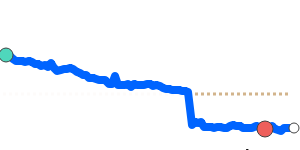Recent forecasts for the USD to TRY exchange rate reflect a complex interplay of external and domestic factors influencing both currencies. Analysts note that the US dollar has exhibited weakness driven by expectations of forthcoming interest rate cuts from the Federal Reserve, particularly as inflation data revealed a surprising decline, reinforcing the notion of a dovish shift in US monetary policy. The decline in the consumer price index to 2.7% in November has led traders to anticipate the Fed will act sooner and more aggressively, which tends to exert downward pressure on the USD.
As of late December 2025, the USD to TRY has reached 90-day highs at approximately 42.86, a figure that sits 1.6% above its three-month average of 42.2. This stability comes amid a 3.2% trading range from 41.55 to 42.86, suggesting that while the USD is drifting lower against major currencies, the lira's depreciation remains a concern due to ongoing political unrest and economic volatility. Increased risk-on sentiment from global markets has further driven the USD lower as investors pivot away from safe-haven assets.
On the Turkish side, the lira has been impacted significantly by a series of interest rate cuts conducted by the Central Bank of the Republic of Turkey, intended to stimulate growth amid persistently high inflation, which was reported at 33.29% in September 2025. Moreover, recent protests and political instability continue to create headwinds for the currency, exacerbating the volatile environment it currently navigates.
Economists suggest that the forex market may experience increased fluctuations in the USD to TRY exchange rate, primarily driven by geopolitical developments in Turkey and ongoing signals from the US Federal Reserve regarding monetary policy direction. Observers will be closely monitoring both US economic indicators and the Turkish Central Bank's responses in the coming months, as these factors will play a critical role in shaping the exchange rate dynamics moving forward.

